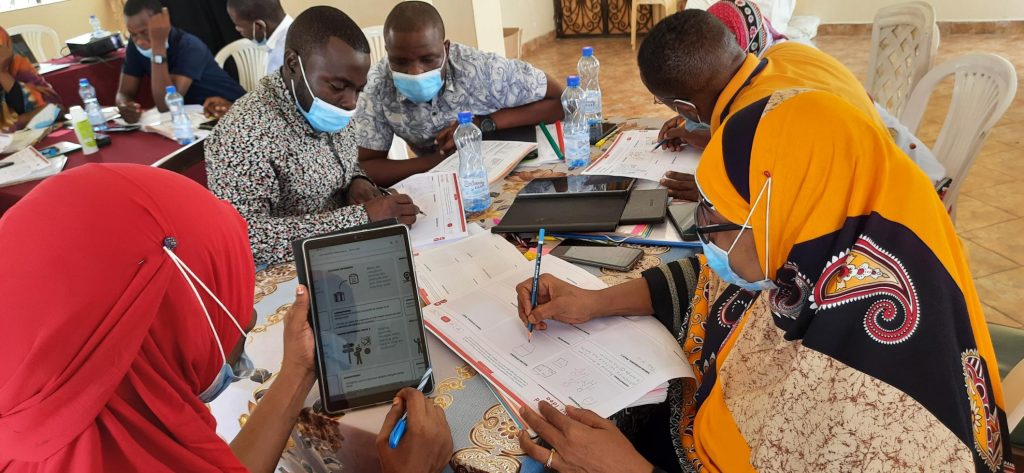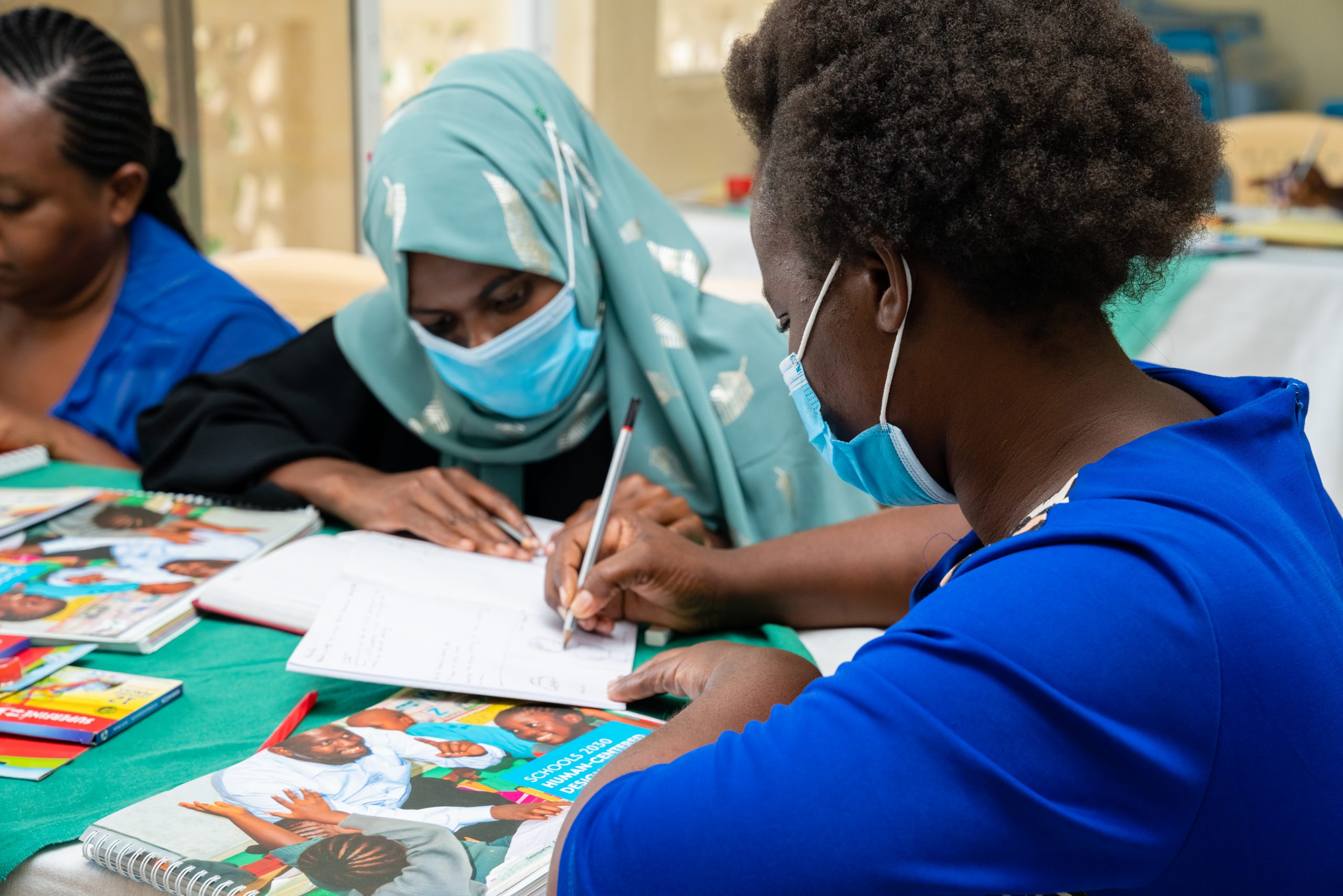The Aga Khan Foundation (AKF)’s approach to education reform is locally rooted but globally informed. Using what we know about education and drawing on our long-term engagement with local communities, we root our approach in finding solutions that are locally driven so that the impact is sustainable.
When Mr. Sylvester Kalama, the deputy principal Kizingitini Secondary school in Kenya, first attended the Schools2030 design thinking sessions, led by AKF in Faza, he did not know what to expect. How would yet another ‘training’ help them solve the challenges they faced in their classrooms? More so, would this really be the answer to the most critical challenge they faced: conflicts among students from different villages in the school? By the end of the sessions, Mr. Kalama and his design teammate Mr. Evans Nyaberi had co-designed an idea for enhancing peace club activities in their school that brought together students from different villages as a way to reconcile tensions and develop teamwork skills.

Kizingitini town is situated on the North coast (east of Faza) and is the largest fishing port on the island. The majority of the residents rely on fishing to earn a living with some of the students in the school taking up the activity to supplement their family’s income. Kizingitini Secondary school, with a population of 292 students (140 male and 152 female), is the main learning institution (secondary level) in the area and draws learners from the diverse mix of villages, including Tchundwa, Bwajumwali, Faza and Kizingitini. The challenge, as identified by Mr. Kalama and Mr. Nyaberi, was that students in the school maintained their distance from others from different villages as a result of the cultural differences and conflicts between these villages. This in turn affected their interaction in the classroom, especially when working on group assignments. Indeed, it was not uncommon to break up fights between students in the schools stemming from conflicts from their villages.
Kizingitini Secondary is one of 100 partner schools and youth organisations taking part In the HCD sessions. These are designed to support teachers and youth partners to co-develop micro-innovations that will address deficits emerging from learning outcomes and learning environment assessments undertaken by teachers, in addition to collaborative stakeholder engagements and discussions. The sessions are held at a centralised location with teachers from different schools within the area selecting representatives who form the design team. The design sessions are therefore rich in creativity and innovation as the diverse group of teachers within the session support each other through the journey of exploring challenges they face in their classrooms and developing innovative solutions to address these challenges.
“The peace clubs will create a harmonious environment where learning and teaching will take place peacefully.”
Sylvester Kalama, teacher at Kizingitini Secondary
For Mr. Kalama and Mr. Nyaberi (the design team), the question was how could they best support young learners to reconcile their tensions and create a platform where the students could solve their differences amicably. The two wanted their students to appreciate that it is possible to solve issues peacefully through understanding, mutual respect, the appreciation of difference and the value of diversity. And so, the idea for ‘Amani clubs: Our peace my responsibility’ was born (the word Amani means peace). The club is an after-school co-curricular group where learners engage in various activities to enhance their collaboration and team spirit. This includes engaging in football matches where the teams are formed of students from different villages, peace walks and community service exercises.

Mr. Kalama believes that through the peace club, the students would become friends with others from different villages as they carry out various activities. “Furthermore, students will also be friendly to teachers who are engaged in the same activities. In this way, the peace clubs will create a harmonious environment where learning and teaching will take place peacefully. This peaceful co-existence will eventually spread to the communities leading to peaceful villages.”
To date, the club has recruited 50 members (25 male and 25 female students) who have engaged in football matches, a community market clean-up and a tree planting exercise. The perception of other teachers and the school administration has been positive as they feel the club has helped improve the discipline in the school as students are seen working together in and out of the classroom despite their differences and diverse backgrounds, as well as supporting the students to explore their talents through the club activities (like football).
The school hopes to see a movement of peace clubs in Lamu County for starters and eventually having them nationally and globally as the world embraces the legacy of peace as a tool to resolve challenges and appreciate difference. To kick this off, the school recommends that peace clubs are embraced by the MoE and infused in the co-curriculum activities so that students at all levels are taught the core values of peace.
